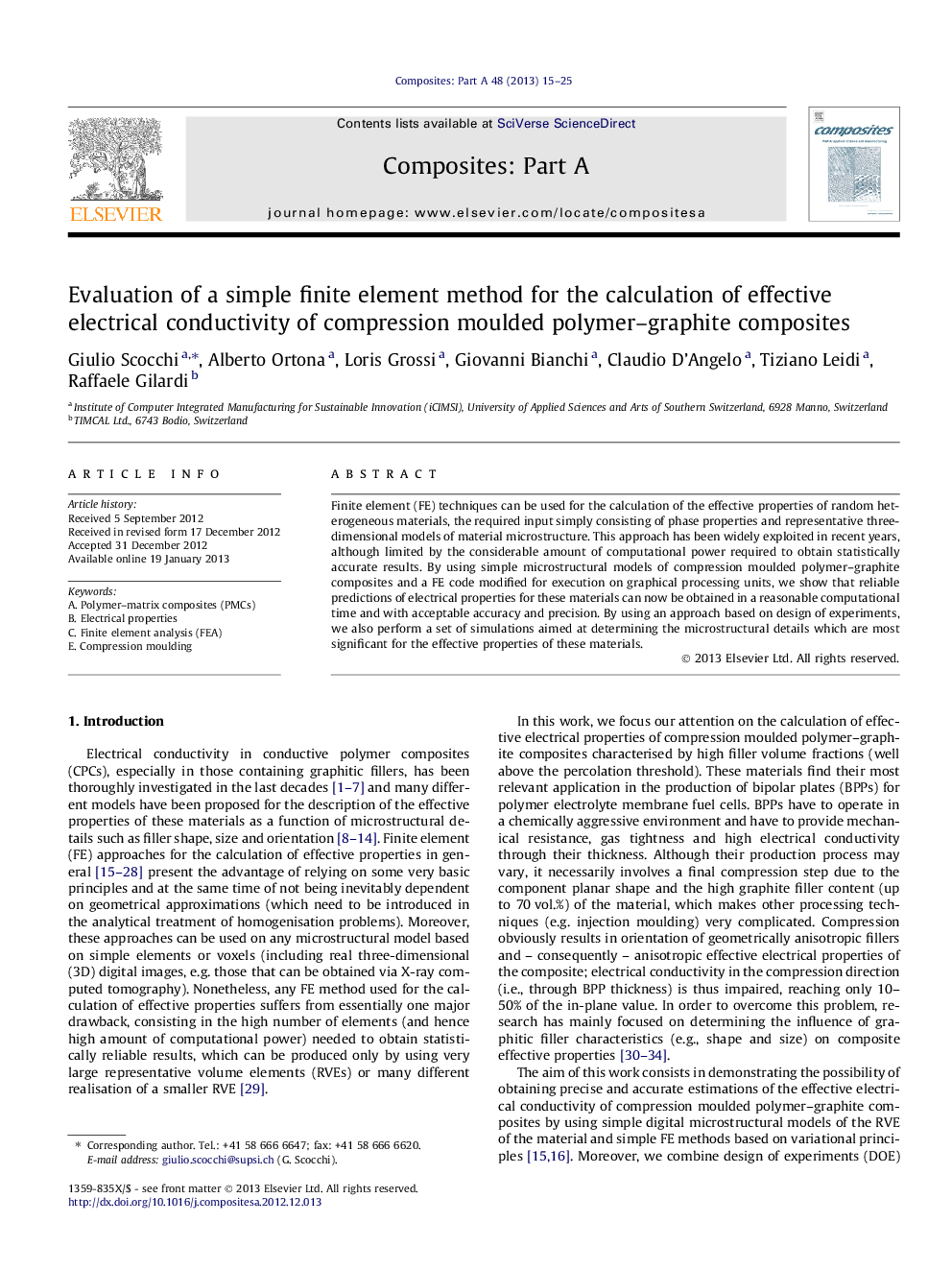| Article ID | Journal | Published Year | Pages | File Type |
|---|---|---|---|---|
| 7892739 | Composites Part A: Applied Science and Manufacturing | 2013 | 11 Pages |
Abstract
Finite element (FE) techniques can be used for the calculation of the effective properties of random heterogeneous materials, the required input simply consisting of phase properties and representative three-dimensional models of material microstructure. This approach has been widely exploited in recent years, although limited by the considerable amount of computational power required to obtain statistically accurate results. By using simple microstructural models of compression moulded polymer-graphite composites and a FE code modified for execution on graphical processing units, we show that reliable predictions of electrical properties for these materials can now be obtained in a reasonable computational time and with acceptable accuracy and precision. By using an approach based on design of experiments, we also perform a set of simulations aimed at determining the microstructural details which are most significant for the effective properties of these materials.
Keywords
Related Topics
Physical Sciences and Engineering
Materials Science
Ceramics and Composites
Authors
Giulio Scocchi, Alberto Ortona, Loris Grossi, Giovanni Bianchi, Claudio D'Angelo, Tiziano Leidi, Raffaele Gilardi,
